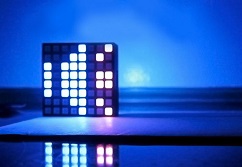Ericsson and Philips are partnering on a connected smart LED light program that will bring green lighting and mobile broadband to cities.
The project, which was announced at Mobile World Congress in Barcelona, aims to solve environmental and capacity issues. Cities with green lighting can meet sustainability goals and the lights allow operators to roll out better city-wide mobile broadband coverage.
The new technology, according to Ericsson, will integrate vendor’s equipment into light poles around the city. The lighting hardware, from Philips, is designed to work with Ericsson’s products.
Its new Zero Site smart street light will use LED lighting, which can boost a city’s energy savings by as much as 80 percent.
The new lighting, which is being marketed as ”lighting-as-a-service”, will be energy-efficient and will include space for mobile operators, working with Ericsson, to rent out and install their mobile broadband infrastructure.
Philips said the new lighting technology can net savings of between 50 and 70 per cent, rising to 80 per cent when coupled with smart control.
Frans van Houten, President and CEO of Philips, commented: “This new connected LED street lighting model is another example of us bringing the Internet of Things to life and demonstrates the capabilities of light beyond illumination.
Ericsson President and CEO Hans Vestberg said: “This is a tremendous solution using ICT and partnerships to address the megatrend of urbanisation. City populations are increasing at the rate of 7,500 people per hour, but our world is not geographically expanding.
“Meanwhile, our ConsumerLab research shows that internet connectivity is one of the top five factors for satisfaction in city life. This Zero Site solution is the kind of innovation that offers a way for people to succeed in the Networked Society.”



